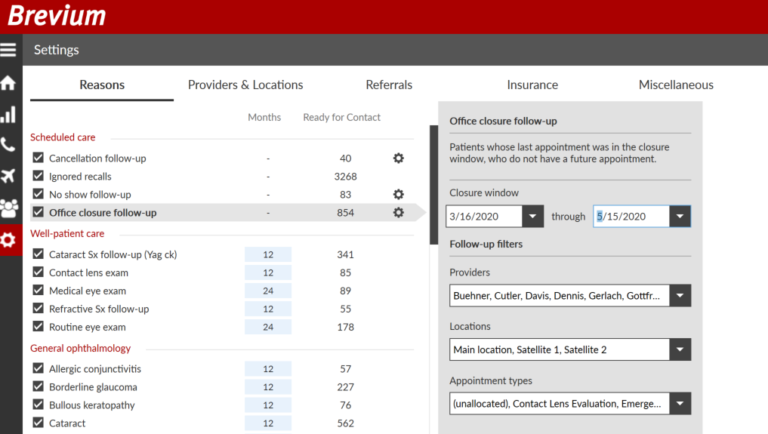The Brevium Blog

Five Ways to Retain Patients in a Post-Pandemic World
Helping patients feel comfortable coming back into your office after the pandemic requires careful thought and planning. Below are five strategies to bring patients out of their virtual shelters and into your practice for the care they’ve been putting off.
1. Communicate Your Safety Measures
The first and most important action is to communicate clearly and often with your patients, so they know that their health is your most important priority. Create a page on your website that explains measures you are taking to keep them healthy and safe. Then use email, texts and phone calls just as you would for recalls and reminders to direct them to your website. Also include a note in your regular communications that you have safety measures in place. And don’t forget social media; your newsletter, if you publish one; and blog posts to get your message across.
Some precautions that you can communicate include your sanitization practices, face mask policies for staff and patients, social distancing guidelines, availability of telemedicine, and the other cleanliness and health measures you have always practiced.
2. Stay Open, Stay Clean, and Keep Your Staff Informed
The Centers for Disease Control (CDC) recommends that you keep your office open, your staff informed and your hygiene at a high level. Staffing shortages are forcing many businesses to reduce their hours, but you should do all you can to maintain or return to your normal business hours, which are most convenient for the patients you are trying to retain. If you have to reduce hours, make sure your call center informs patients of your efforts to accommodate their schedules as quickly as you can.
When patients arrive at your office, they should find your hygiene practices impeccable, and your staff should be well informed about a number of pandemic-related issues. These include being experts in best practices for avoiding the spread of germs; the current risk level for your area; how to respond if someone in your office is exposed to an infection; and your patients’ experience with COVID-19, whether they lost family members, experienced severe or long-COVID-19 symptoms and current concerns with infections, so you can be empathetic.
3. Keep Fees Affordable
Your costs for supplies and staff are rising fast, but before you raise your fees, keep in mind that your patients, especially those without sufficient insurance, are hurting, too. And they are especially sensitive to price gouging, even though your increases are justified. By keeping your fees affordable and competitive, you might also benefit by attracting patients whose previous caregiver has raised their prices.
4. Educate Patients
The more you and your staff can educate your patients, the more they will trust you. They are tired of the fluffy “We’re in this together” messages they’ve heard throughout the pandemic and want real information. Start in your previsit communications by explaining how to prepare for the visit; what to expect when they arrive, such as social distancing; and how the practice handles active COVID-19 patients.
When they arrive at your office, they should find your staff able to explain the current pandemic situation in your geographical area and advise on ways to stay safe. Don’t be afraid to recommend immunization for anyone who isn’t fully vaccinated. The CDC says vaccinations can prevent 20 million deaths each year.
5. Consider Virtual Patient Visits
Patients’ biggest concerns in this post-pandemic world include access to healthcare. [1] Facing reduced hours, staff shortages and an influx of patients, practices are scheduling patients far into the future, which patients find frustrating. Consider moving follow-up visits, consults and other visits that can be conducted virtually to telemedicine. When given this option, many patients would rather visit their doctor by video than wait days or weeks for an in-office appointment.
Brevium Can Help You Retain and Reactivate Your Patients
Brevium is an expert in patient retention and the pioneer in patient reactivation. Brevium’s software mines its clients’ patient databases using customized algorithms to improve the patient appointment lifecycle™. Hundreds of practices have found Brevium to be a trusted partner, with personalized training and unlimited support. Through original research and software development, Brevium helps ensure that patients return for the care they need, and practices derive the greatest financial benefit from the patient appointment lifecycle™.
I want to find out how Brevium can help me retain and reactivate my patients.














